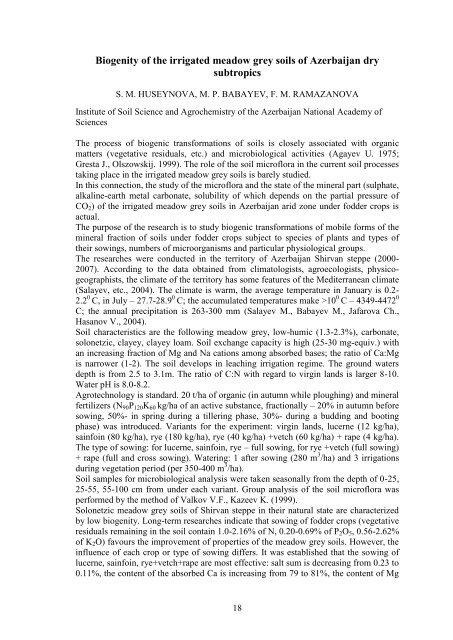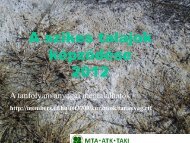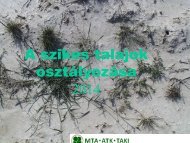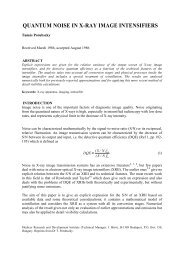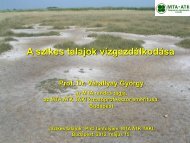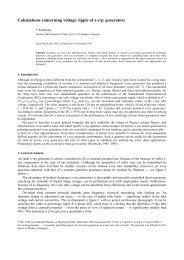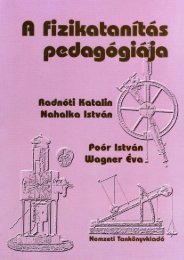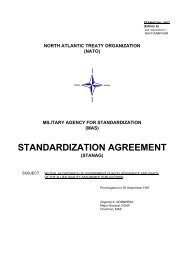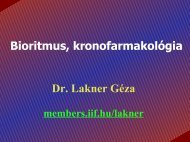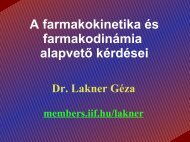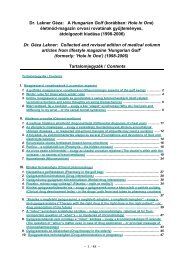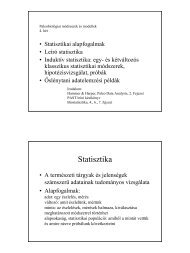Abstract form
Abstract form
Abstract form
You also want an ePaper? Increase the reach of your titles
YUMPU automatically turns print PDFs into web optimized ePapers that Google loves.
Biogenity of the irrigated meadow grey soils of Azerbaijan dry<br />
subtropics<br />
S. M. HUSEYNOVA, M. P. BABAYEV, F. M. RAMAZANOVA<br />
Institute of Soil Science and Agrochemistry of the Azerbaijan National Academy of<br />
Sciences<br />
The process of biogenic trans<strong>form</strong>ations of soils is closely associated with organic<br />
matters (vegetative residuals, etc.) and microbiological activities (Agayev U. 1975;<br />
Gresta J., Olszowskij. 1999). The role of the soil microflora in the current soil processes<br />
taking place in the irrigated meadow grey soils is barely studied.<br />
In this connection, the study of the microflora and the state of the mineral part (sulphate,<br />
alkaline-earth metal carbonate, solubility of which depends on the partial pressure of<br />
CO 2 ) of the irrigated meadow grey soils in Azerbaijan arid zone under fodder crops is<br />
actual.<br />
The purpose of the research is to study biogenic trans<strong>form</strong>ations of mobile <strong>form</strong>s of the<br />
mineral fraction of soils under fodder crops subject to species of plants and types of<br />
their sowings, numbers of microorganisms and particular physiological groups.<br />
The researches were conducted in the territory of Azerbaijan Shirvan steppe (2000-<br />
2007). According to the data obtained from climatologists, agroecologists, physicogeographists,<br />
the climate of the territory has some features of the Mediterranean climate<br />
(Salayev, etc., 2004). The climate is warm, the average temperature in January is 0.2-<br />
2.2 0 C, in July – 27.7-28.9 0 C; the accumulated temperatures make >10 0 C – 4349-4472 0<br />
C; the annual precipitation is 263-300 mm (Salayev M., Babayev M., Jafarova Ch.,<br />
Hasanov V., 2004).<br />
Soil characteristics are the following meadow grey, low-humic (1.3-2.3%), carbonate,<br />
solonetzic, clayey, clayey loam. Soil exchange capacity is high (25-30 mg-equiv.) with<br />
an increasing fraction of Mg and Na cations among absorbed bases; the ratio of Ca:Mg<br />
is narrower (1-2). The soil develops in leaching irrigation regime. The ground waters<br />
depth is from 2.5 to 3.1m. The ratio of C:N with regard to virgin lands is larger 8-10.<br />
Water pH is 8.0-8.2.<br />
Agrotechnology is standard. 20 t/ha of organic (in autumn while ploughing) and mineral<br />
fertilizers (N 90 P 120 K 60 kg/ha of an active substance, fractionally – 20% in autumn before<br />
sowing, 50%- in spring during a tillering phase, 30%- during a budding and booting<br />
phase) was introduced. Variants for the experiment: virgin lands, lucerne (12 kg/ha),<br />
sainfoin (80 kg/ha), rye (180 kg/ha), rye (40 kg/ha) +vetch (60 kg/ha) + rape (4 kg/ha).<br />
The type of sowing: for lucerne, sainfoin, rye – full sowing, for rye +vetch (full sowing)<br />
+ rape (full and cross sowing). Watering: 1 after sowing (280 m 3 /ha) and 3 irrigations<br />
during vegetation period (per 350-400 m 3 /ha).<br />
Soil samples for microbiological analysis were taken seasonally from the depth of 0-25,<br />
25-55, 55-100 cm from under each variant. Group analysis of the soil microflora was<br />
per<strong>form</strong>ed by the method of Valkov V.F., Kazeev K. (1999).<br />
Solonetzic meadow grey soils of Shirvan steppe in their natural state are characterized<br />
by low biogenity. Long-term researches indicate that sowing of fodder crops (vegetative<br />
residuals remaining in the soil contain 1.0-2.16% of N, 0.20-0.69% of P 2 O 5 , 0.56-2.62%<br />
of K 2 O) favours the improvement of properties of the meadow grey soils. However, the<br />
influence of each crop or type of sowing differs. It was established that the sowing of<br />
lucerne, sainfoin, rye+vetch+rape are most effective: salt sum is decreasing from 0.23 to<br />
0.11%, the content of the absorbed Ca is increasing from 79 to 81%, the content of Mg<br />
18


